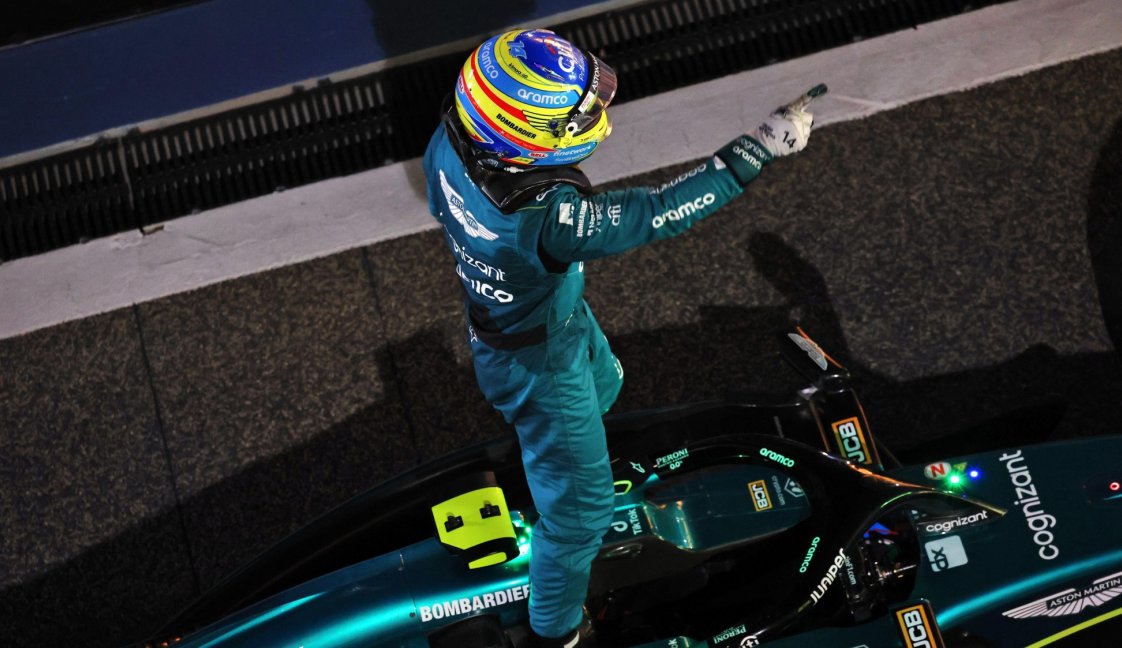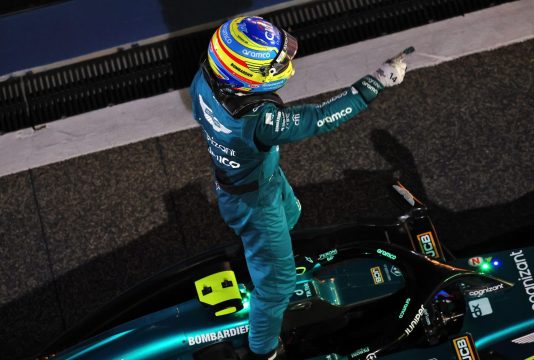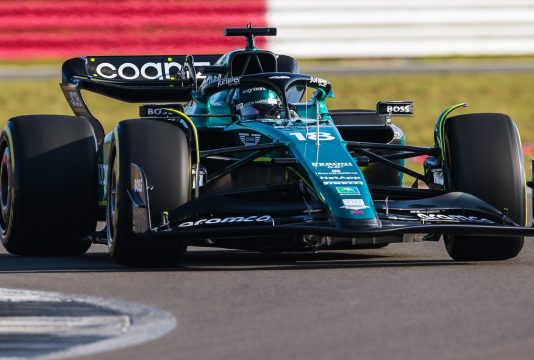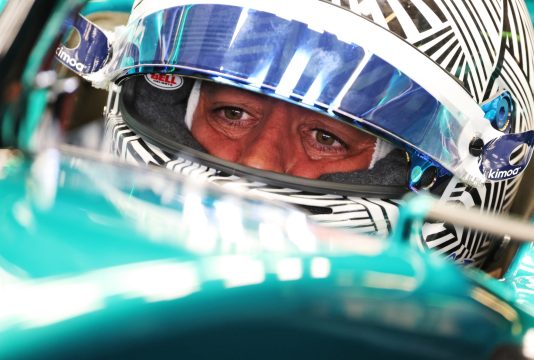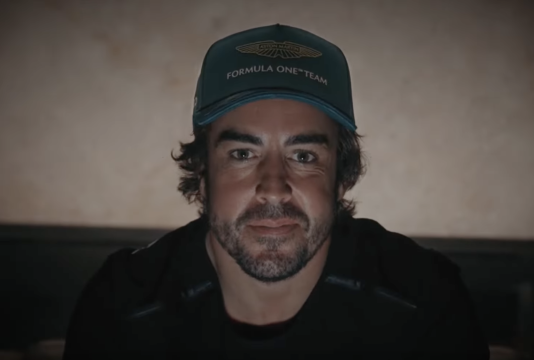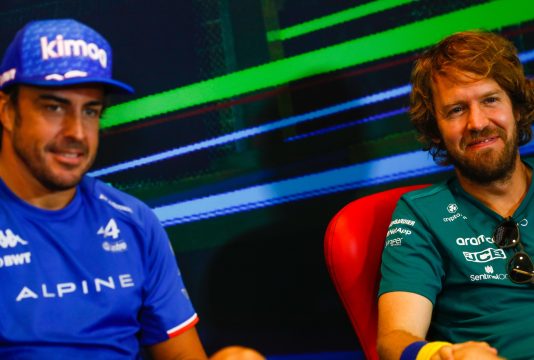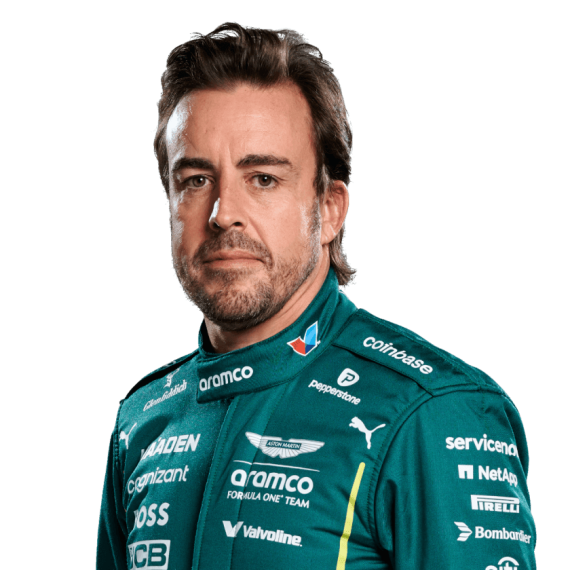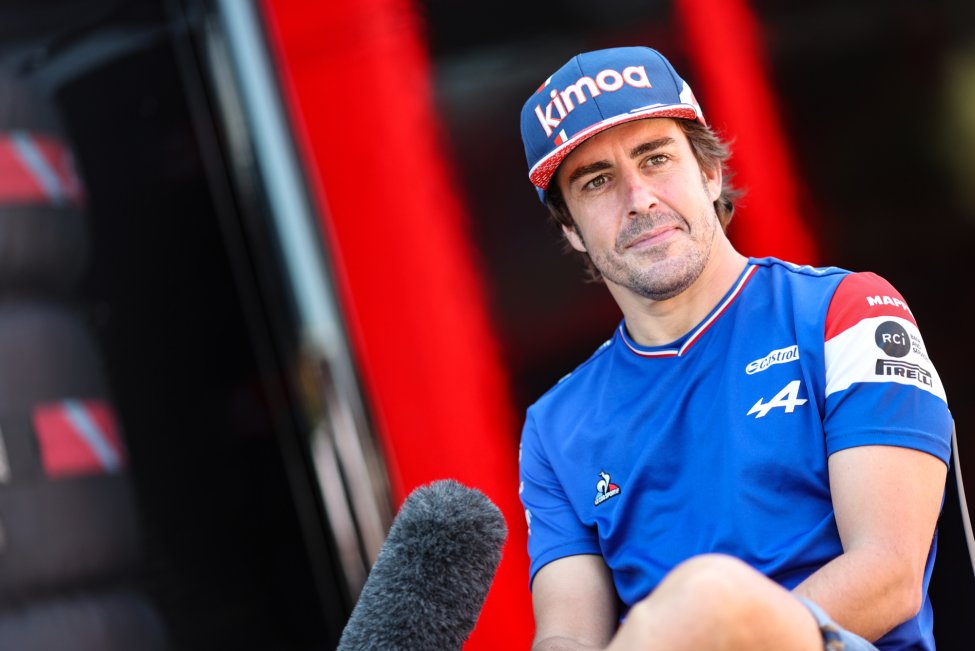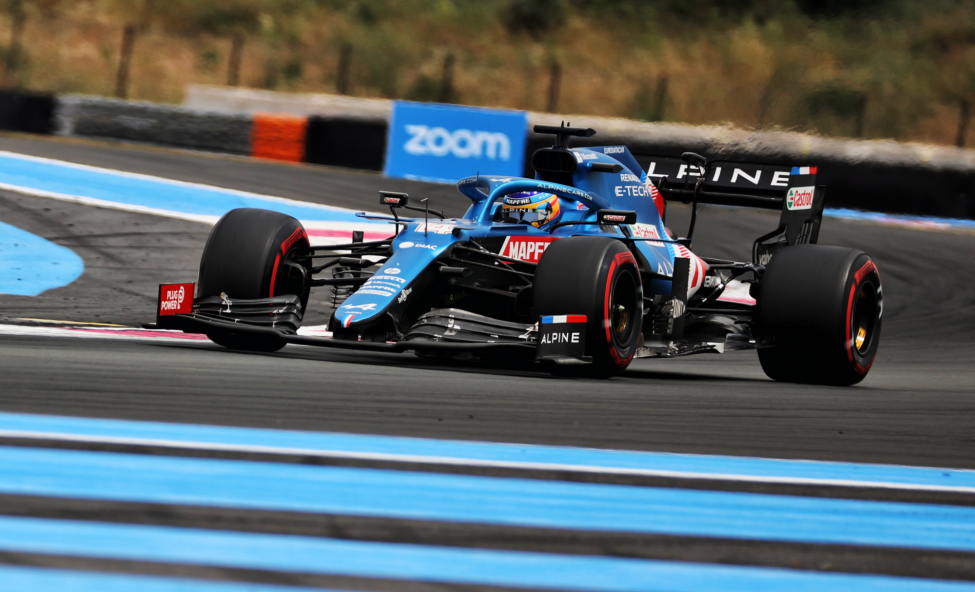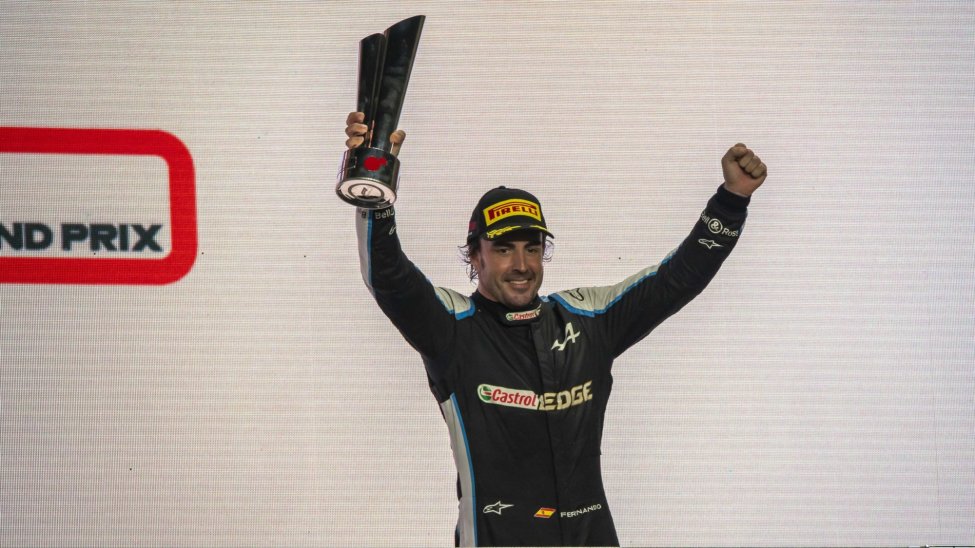Fernando Alonso
Aston Martin F1 TeamIn his 21-season Formula 1 career so far (2001-present), Fernando Alonso has clinched two world championships and finished runner-up three times, winning a remarkable 32 Grands Prix. In 2025, Alonso will once again race for Aston Martin alongside Lance Stroll.
F1 season 2025
| WC Position | 10 |
| Races | 24 |
| WC points | 56.0 |
| Victories | 0 |
| Podiums | 0 |
| Pole positions | 0 |
F1 career
| World titles | 2 |
| WC points | 2393 |
| Races | 425 |
| Victories | 32 |
| Podium places | 106 |
| Pole positions | 22 |
Personal information
| Name | Fernando Alonso |
| Team | Aston Martin |
| Date of Birth | 29 July, 1981 |
| Place of Birth | Oviedo, Asturias, Spain |
| Height | 1.71m |
| Weight | 68kg |
| Nationality | Spanish |
| Race Number | 14 |
Biography of F1 driver Fernando Alonso
As a two-time Formula 1 World Champion, Fernando Alonso has been a central figure in the sport for almost two decades since entering the scene with Minardi in 2001.
Born into a working-class family in Oviedo, Alonso began his karting journey at the age of three, steadily attaining success at various levels, from local to national and on the global stage.
How did Alonso navigate the transition from karting triumphs to reaching the pinnacle of success in Formula 1? Here is a thorough overview of Fernando Alonso's life.
Teams and teammates | Fernando Alonso
| Team | Teammate | Season |
|---|---|---|
| Minardi | Tarso Marques | 2001 |
| Renault | Jarno Trulli | 2003 |
| Renault | Jarno Trulli | 2004 |
| Renault | Giancarlo Fisichella | 2005 |
| Renault | Giancarlo Fisichella | 2006 |
| McLaren | Lewis Hamilton | 2007 |
| Renault | Nelson Piquet Jr. | 2008 |
| Renault | Nelson Piquet Jr. | 2009 |
| Ferrari | Felipe Massa | 2010 |
| Ferrari | Felipe Massa | 2011 |
| Ferrari | Felipe Massa | 2012 |
| Ferrari | Felipe Massa | 2013 |
| Ferrari | Kimi Raikkonen | 2014 |
| McLaren | Jenson Button | 2015 |
| McLaren | Jenson Button | 2016 |
| McLaren | Stoffel Vandoorne | 2017 |
| McLaren | Stoffel Vandoorne | 2018 |
| Alpine | Esteban Ocon | 2021 |
| Alpine | Esteban Ocon | 2022 |
| Aston Martin | Lance Stroll | 2023 |
| Aston Martin | Lance Stroll | 2024 |
| Aston Martin | Lance Stroll | 2025 |
Alonso's karting career
Alonso's father, Jose Luis Alonso, engaged in amateur karting and sought a pastime to share with his children. While Fernando's elder sister, Lorena, didn't take to the activity, the kart became a part of her then three-year-old brother's pursuits.
The Alonso family dedicated themselves to nurturing the young talent's karting career. Given the financial challenges associated with the endeavor, Alonso received support from mentor Genis Marco, who adeptly secured both personal and sponsorship funding.
Triumphs in the junior championship for children paved the way for three consecutive Spanish Junior National Championships from 1993 to 1995. Subsequently, Alonso achieved victories in the Italian and Spanish International A championships, securing a second-place finish in the European Championship.
Junior career, F1 start and Renault move
Alonso made his car racing debut at the 1999 Euro Open by Nissan with Campos Motorsport at the age of 17.
He won the title at the final race of the season after claiming six wins and nine pole positions, making the jump to the International Formula 3000 Championship with the Minardi-backed Team Astromega.
Minardi Sports Director Cesare Fiorio gave Alonso his first run in an F1 car at Jerez as part of Euro Open by Nissan's agreement to help their champion test at a higher level. From there, Alonso was named test and reserve driver in 2000 before securing a race seat for 2001.
After ending the season with no points and a best result of 10th place, but still impressing in back-of-the-grid machinery, Alonso joined Renault as a test driver in 2002, before becoming Jarno Trulli's teammate for 2003.
At just his second race, Alonso became the youngest driver to take a pole position at the Malaysian Grand Prix, and then broke Bruce McLaren's record as F1's youngest winner at the Hungarian Grand Prix later in the year. The Spaniard ended the season sixth in the standings with 55 points.
The 2004 season saw Alonso continue to make a name for himself, finishing on the podium four times and taking pole at the French Grand Prix. However, it was 2005 when he really burst onto the scene, battling it out with McLaren's Kimi Raikkonen for the title after rules mandated that tyres should not be changed during a race and engines had to last for two Grands Prix.
Although the McLaren proved to be faster, it was also unreliable. Alonso thus took the title and eclipsed Emerson Fittipaldi as the then youngest champion thanks to seven victories, six poles and 14 podium finishes.
While Ferrari and Michael Schumacher were back on form in 2006, it was Alonso who won six of the opening nine races. However, after Renault's tuned mass damper was banned, Ferrari struck back and the two drivers were level on points heading into the penultimate round.
Schumacher's hopes of a title were ended when his engine expired while leading the Japanese Grand Prix, handing the race win to Alonso, who clinched the title in Brazil.
Move to McLaren and Renault return
Alonso departed Renault to join McLaren on a three-year contract, becoming teammates with rookie Lewis Hamilton.
Despite both being contenders for the F1 World Championship, their relationship soured due to various incidents. One notable incident occurred at the Hungarian Grand Prix, where Hamilton ignored a team instruction, leading to Alonso slowing him down in the pit lane.
McLaren faced its own challenges with the Spygate controversy. Nevertheless, Alonso and Hamilton entered the season's final race with a chance to clinch the title. However, Ferrari's Raikkonen emerged victorious by a single point. Alonso finished third in the standings, tied on points with Hamilton, but the British driver had more second-place finishes.
The strained relationship led to Alonso and McLaren terminating their contract. Despite receiving offers from several teams, Alonso re-signed with Renault on a two-year deal.
While the season had a slow start, Alonso outscored every other driver in the final five races. He secured victories in Singapore and Japan, with the former marked by controversy known as Crashgate, where teammate Nelson Piquet Jr. deliberately crashed to trigger the Safety Car deployment.
Ferrari switch
Despite offers from Red Bull and Honda for the 2009 season, Alonso signed a contract to stay with Renault. However, after a season that saw him finish ninth in the Drivers' Championship whilst the team were investigated for Crashgate, he left for Ferrari in 2010.
Alonso won on his debut for the team at the 2010 Bahrain Grand Prix. He secured four more victories, meaning that he entered the season-ending Abu Dhabi Grand Prix atop the standings by eight points, despite trailing by 47 at one stage. However, a strategic error by Ferrari in the race resulted in Alonso getting stuck behind Renault's Vitaly Petrov, and consequently he finished second in the standings to Sebastian Vettel.
There was no title challenge in 2011 as Ferrari lacked aerodynamic grip and struggled with the switch to Pirelli tyres. Alonso claimed 10 podium finishes, including a win at the British Grand Prix following a Red Bull strategy mistake, but it was only good enough for fourth in the standings.
After extending his contract with Ferrari, Alonso returned to form in 2012 and once again competed with Vettel for the title. Wins in Malaysia, Spain (Valencia) and Germany helped Alonso to build a 40-point advantage in the standings, but Vettel mounted a ferocious comeback to lead by 13 points heading into the final race of the season in Brazil. Alonso finished second, only for Vettel to cross the line sixth to once again deny him.
There was little Alonso could do to deny Vettel in 2013 as the German cruised to another title ahead of the Spaniard, while 2014 saw Mercedes emerge as the team to beat. Alonso failed to win a race but did finish on the podium twice. However, with Ferrari unable to deliver a championship-winning car, Alonso left for McLaren.
Back at McLaren
Alonso rejoined McLaren on a three-year contract with no opt-out clauses, but things didn't start off on the right foot. An accident during pre-season testing in February 2015 saw Alonso suffer a concussion, resulting in Kevin Magnussen replacing him at the season-opening Australian Grand Prix.
When Alonso returned, things didn't go to plan as McLaren's Honda engine was severely under-powered, and as a result the team struggled mightily. Alonso finished in the points on just two occasions, and he was vocal about his displeasure via the team radio.
A big crash with Esteban Gutierrez at the 2016 season-opener in Australia resulted in Alonso missing the following race in Bahrain for medical reasons. He outqualified teammate Jenson Button 15 times during the season, and finished in the points nine times to take 10th in the Drivers' Championship with 54 points.
There was no leap forward in 2017, with Alonso suffering from poor reliability in several of the early rounds. His best finish was a seventh in Hungary, leaving Alonso 15th in the World Championship.
Sabbatical and F1 return with Alpine
Alonso inked a fresh contract with McLaren, and the 2018 season kicked off with a fifth-place finish in Australia after McLaren switched from Honda to Renault power. However, it became evident that his contentment in Formula 1 was waning.
The Spanish driver concluded the season in 11th place in the standings and subsequently announced his departure from the sport, attributing it to a lack of on-track racing and competition. Although he retained his role as a brand ambassador for McLaren, his contract lapsed at the end of 2019 and was not extended.
Following a two-year break, Alonso made a comeback to the F1 grid in 2021 by signing a two-year deal with the Alpine team, formerly known as Renault.
Other racing categories
Alonso made his endurance racing debut at the 1999 24 Hours of Barcelona, finishing 10th in a Hyundai Accent. In 2018, he took part in the 24 Hours of Daytona, sharing the No.22 United Autosports Ligier JS P2 with Lando Norris and Philip Hanson, though they finished 38th.
He then took part in the full 2018/19 FIA World Endurance Championship alongside Sebastien Buemi and Kazuki Nakajima, wining the title in the end after claiming five victories, including the 24 Hours of Le Mans in both 2018 and 2019.
Alonso participated in the 2017 Indianapolis 500 for McLaren Honda Andretti, qualifying fifth and leading four times before retiring from seventh spot due an engine failure with 21 laps remaining. Although he tried to take part in the 2019 event as well, he ultimately failed to qualify.
Lastly, Alonso took part in the 2020 Dakar Rally for Toyota. Driving alongside Marc Coma, the duo finished 13th.
A competitive comeback
Alonso's Formula 1 comeback did not get off to the best start when he had a cycling accident ahead of the season getting underway. He suffered a broken jaw, and was required to have two metal plates fitted as a result.
The Spaniard was back in action at the opening race in Bahrain, though, and looked to be on the pace when he qualified his Alpine in ninth on the grid, beating teammate Esteban Ocon who would line up in 16th.
Alonso's race ended in bizarre circumstances, though, when a sandwich wrapper lodged itself in the car's brake duct, forcing him to retire due to the effect on the brake temperatures.
There were some ups and downs during the following races as Alonso, like the other drivers racing for new teams in 2021, faced struggles in adapting to his new car.
But things started to look up from the Azerbaijan Grand Prix in June, where he finished in sixth, his best result by that part of the season.
There followed a consecutive run of points for Alonso in the next few events, including an impressive drive to fourth at the eventful Hungarian Grand Prix. The double World Champion proved he could be a team player by defending against the charging Lewis Hamilton in order to prevent the Mercedes driver from challenging Ocon up ahead for the win.
Hamilton called his battle with Alonso "amazing", but suggested it was "a little bit over on the limit". Meanwhile, Ocon took a surprise debut F1 victory and praised Alonso for his role in making it happen.
Later in the year, Ocon repaid the favour by putting in some defensive driving to help Alonso in securing a podium finish at the Qatar Grand Prix. The Spaniard finished third, his best result in Formula 1 since 2014.
Alonso ended his comeback campaign in tenth place in the World Championship with 81 points, beating Ocon in the process, who scored 74 points in P11. Alpine finished the season with fifth spot in the Constructors' Championship.
Frustrations with Alpine and new beginnings for 2023
Alonso remained with Alpine for 2022, but endured a frustrating campaign where his A522 let him down on too many occasions.
The Spaniard ended the season with 81 points to Ocon's 92, but the Spaniard was often the quicker of the two Alpines, notably qualifying on the front row in Canada, and frequently using his experience and guile to make up places on the opening laps of Grands Prix.
One of Alonso's best drives of the season came at the United States Grand Prix, when, after a high-speed collision with Lance Stroll necessitated a pit stop for repairs, Alonso hustled his damaged A522 into seventh place by the finish, despite his right-hand mirror falling off during the race.
However, there were also five mechanical retirements, including four in the season's last seven race, prompting the Spaniard to publicly air his frustration at his misfortune.
Though Alonso had been widely expected to continue with Alpine for another year, the Spaniard shocked many in the F1 paddock with the mid-season announcement that he would be moving to Aston Martin for 2023, to replace the retiring Sebastian Vettel.
And while the Spaniard privately seems to have given up on the idea of adding to his two World Championship crowns, his speed and enthusiasm for F1 remain undimmed.
Now the most experienced driver in F1 history, having broken Kimi Raikkonen's record of 349 starts at the 2022 Singapore Grand Prix, it will be fascinating to see if Alonso can inspire an underperforming but ambitious Aston Martin team to rise up the grid in 2023.
The 2023 and 2024 season at Aston Martin
Fernando Alonso surprised friends and foes by announcing that he will drive for Aston Martin in 2023. He has signed a multi-year contract with the British team, replacing Sebastian Vettel, who announced his retirement. Lance Stroll is the new teammate of the Spanish driver. With the so-called 'El plan,' Aston Martin had an excellent season start. Alonso kept securing podium finishes, standing on the podium a total of eight times in the 2023 season. He accumulated 206 points, finishing fourth in the standings.
Despite Aston Martin's strong start, the car was not well-developed, leading them to struggle to maintain their consistent podium performance. As a result, they dropped from the second position in the Constructors' Championship to the fifth, partly due to McLaren's strong comeback. Aston Martin was unable to recover in 2024, finishing fifth in the constructors' championship as 'best of the rest'. The car showed little improvement throughout the season.
With Adrian Newey now joining the British team for the 2025 season, expectations are high. Can Fernando Alonso perform better in 2025 as a result?
Don't miss out on any of the Formula 1 action thanks to this handy 2026 F1 calendar that can be easily loaded into your smartphone or PC.
Download the calenderFernando Alonso news
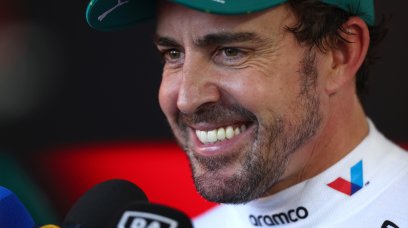
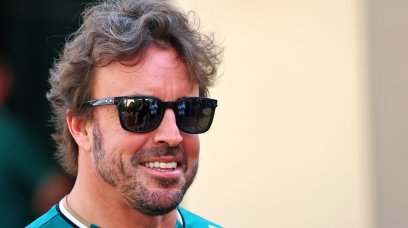
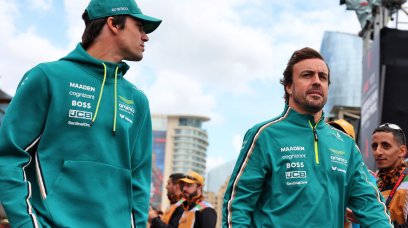
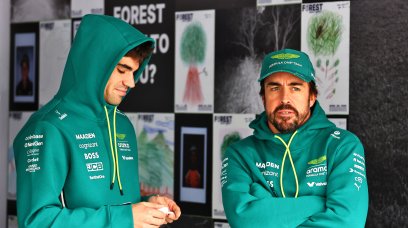
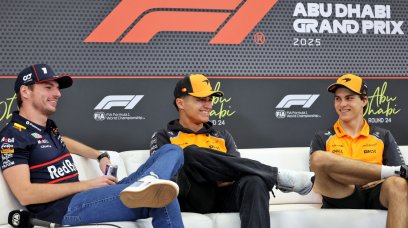
Fernando Alonso videos
